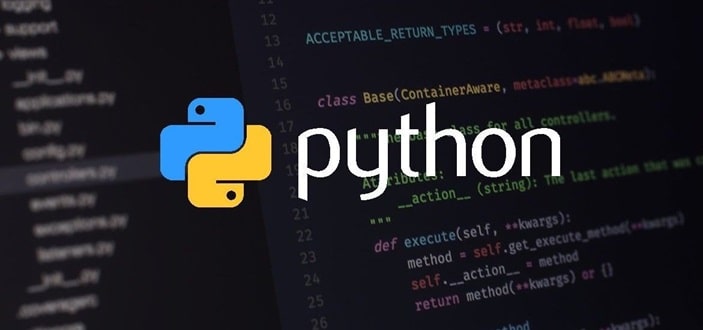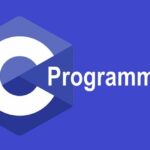Python has emerged as one of the most popular programming languages worldwide due to its simplicity, versatility, and ease of learning. Whether you are a beginner in the world of coding or a seasoned software developer, Python offers a wide range of capabilities that make it a preferred choice in domains like web development, data science, artificial intelligence, and automation.
In this article, we delve into 10+ interesting facts about the Python programming language, exploring its features, history, and impact on modern technology.
1. Created by Guido van Rossum
Python was created by Guido van Rossum in the late 1980s and was first released in 1991. Van Rossum designed Python as a successor to the ABC language, intending to address its shortcomings while maintaining its strengths. One of his primary goals was to create a language that was easy to read, write, and understand, even for beginners. Python’s name was inspired by the British comedy show “Monty Python’s Flying Circus”, reflecting Van Rossum’s desire to make the language fun and approachable.

2. Simple and Readable Syntax
One of Python’s standout features is its simple and readable syntax. The language was designed with an emphasis on readability, using indentation to define blocks of code instead of curly braces or keywords like “end.” This makes Python code easier to understand and maintain. Python’s syntax is often compared to pseudocode, meaning that even non-programmers can often grasp what the code does just by reading it.
This simplicity has made Python a favourite language for beginners and a top choice in educational institutions for teaching programming concepts.
3. Interpreted Language
Python is an interpreted language, meaning that Python code is executed line by line by an interpreter. Unlike compiled languages such as C or Java, which require the code to be compiled before execution, Python programs can be run directly after writing the code. This feature allows for rapid development and testing, as you can quickly see the results of your code without going through a lengthy compile-and-run process.
The interpreted nature of Python makes it a highly productive language for prototyping, debugging, and interactive applications.
4. Multi-Paradigm Programming Language
Python supports multiple programming paradigms, making it a highly flexible language. It allows for:
- Procedural programming, where code is written in a sequence of instructions or procedures.
- Object-oriented programming (OOP), which enables the creation of reusable and modular code using objects and classes.
- Functional programming, which emphasises the use of functions, immutability, and avoiding changing states.
This versatility allows Python to be used in a variety of applications, from web development to machine learning, scientific computing, and automation.
5. Extensive Standard Library
Python’s standard library is one of its biggest strengths. It comes with a rich set of built-in modules and functions that cover everything from file I/O, system operations, and string manipulation to web services, data handling, and database management. This comprehensive library allows developers to perform many tasks without having to install third-party packages or write additional code.
For example, Python’s os module allows you to interact with the operating system, while the math module provides access to mathematical functions. The standard library is often described as Python’s “batteries included” philosophy, meaning that it comes with everything you need to build functional applications.
6. Cross-Platform Language
Python is a cross-platform language, meaning that Python code can be run on different operating systems like Windows, macOS, Linux, and even mobile platforms. This portability makes Python a versatile tool for developers working on projects that need to run on multiple systems without modification.
Python’s cross-platform nature is one reason it is widely used in industries like web development, scientific computing, and enterprise software development.
7. Strong Support for Data Science and Machine Learning
Python has gained significant popularity in recent years due to its strong support for data science, machine learning, and artificial intelligence. The language offers a wide array of powerful libraries and frameworks, such as:
- NumPy and Pandas for data manipulation and analysis.
- Matplotlib and Seaborn for data visualisation.
- Scikit-learn and TensorFlow for machine learning and AI applications.
Python’s simplicity, combined with the availability of these libraries, has made it the language of choice for data scientists, researchers, and AI practitioners around the world.
8. Open-Source and Community Driven
Python is an open-source language, meaning its source code is freely available for anyone to use, modify, and distribute. The development of Python is overseen by the Python Software Foundation (PSF), and contributions to the language are made by a large and active community of developers. This community-driven development model ensures that Python remains up-to-date, secure, and feature-rich.
The open-source nature of Python has also led to the creation of a vast ecosystem of third-party libraries and tools, covering a wide range of use cases from web development to scientific computing.
9. Widely Used in Web Development
Python is extensively used in web development, thanks to popular web frameworks like Django and Flask. These frameworks simplify the process of building secure, scalable, and maintainable web applications by providing built-in features like authentication, routing, and templating.
Django, in particular, is known for its “batteries included” philosophy, offering out-of-the-box solutions for common web development tasks. Many high-traffic websites, including Instagram, Spotify, and YouTube, use Python in their web development stacks, making Python a trusted choice for both startups and large-scale enterprises.
10. Used in Automation and Scripting
Python is frequently used for automation and scripting tasks due to its ease of use and powerful built-in libraries. From automating repetitive tasks to writing scripts that manage file systems, process data, or control other software, Python excels in making workflows more efficient. It is widely used in DevOps and system administration for tasks such as automating server configurations, deploying applications, and managing infrastructure.
Python’s ability to interact with system-level resources and external applications makes it an ideal language for writing scripts that enhance productivity.
11. Growing Demand in Industry
Python’s popularity has surged in recent years, with increasing demand for Python developers across various industries. In fields like data science, web development, cybersecurity, and automation, Python skills are highly sought after. According to various tech industry reports, Python consistently ranks among the top programming languages in terms of job demand and salary potential.
This growing demand has also led to the expansion of Python-related roles, including data scientists, machine learning engineers, web developers, and automation specialists.
12. Ideal for Rapid Prototyping
Due to its simplicity and readability, Python is often used for rapid prototyping. It allows developers to quickly write and test code, making it easy to iterate on ideas and bring products to market faster. Startups and tech companies often use Python for prototyping web applications, data processing tools, or even machine learning models before moving on to more production-ready systems.
Python’s ability to reduce development time without sacrificing functionality makes it a valuable language for innovation.
13. Python’s Influence on Education
Python has become the language of choice in computer science education across the globe. Its easy-to-understand syntax, coupled with its versatility, makes it an ideal language for introducing students to programming. Python is widely used in schools, universities, and coding bootcamps as the first programming language students learn.
Many beginner-friendly resources, online courses, and books are available for those looking to learn Python, making it accessible to learners from all backgrounds.
Conclusion
Python’s rise to prominence in the programming world can be attributed to its simplicity, versatility, and vast community support. Whether you are a beginner looking to break into the field of programming or an experienced developer working on complex projects, Python offers a wealth of resources and capabilities that make it a go-to language for many. From web development and data science to machine learning and automation, Python’s applications are virtually limitless.
With its strong presence in education, industry, and open-source development, Python is set to continue shaping the future of software development for years to come.

